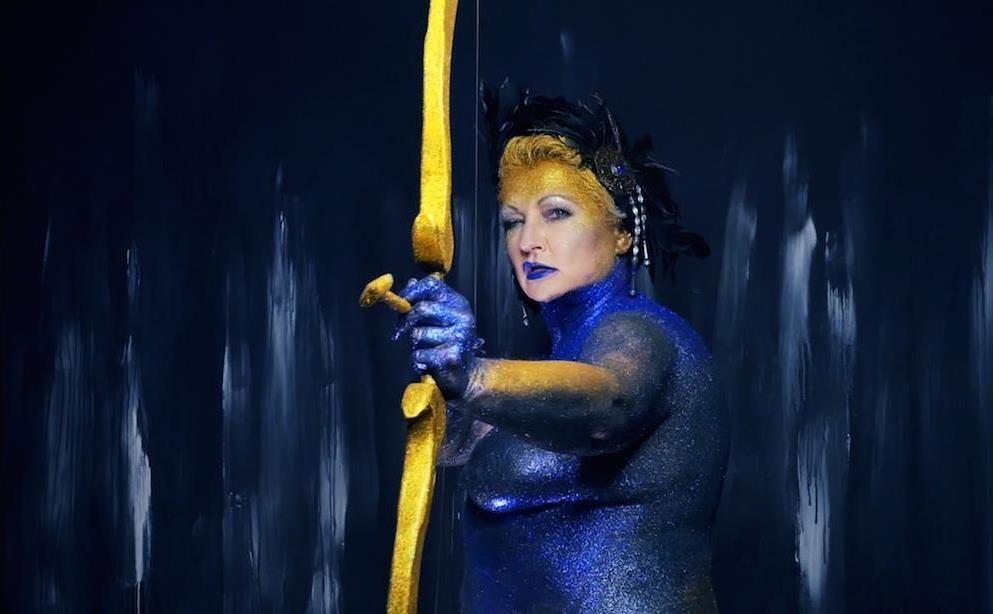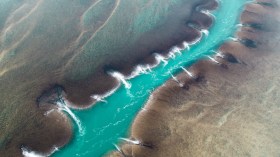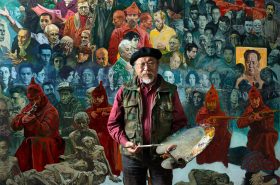The histories of filmed pornography that are occasionally dramatised in cinema and TV – from Paul Thomas Anderson’s Boogie Nights (1997) to the HBO series The Deuce (2017-2019) – often take a fanciful view of the genre’s evolution. Often, indeed, it’s more like a devolution, with a posited ‘golden age’ of porn (shot on glorious celluloid!) followed by the malignant decline ushered in by quick-and-cheap video technology.
It may seem odd, to some, to get so sentimental over what would, at a distance, appear to be such an obvious and primarily ‘underground’ mode of production. Unfussy shots of people having sex, designed to arouse the viewer, right? However, once we step into the infinite debates about the distinctions between erotica and porn, between softcore and hardcore, once we explore the advent of sex-positive and feminist porn, and check out the many and varied audiovisual styles and production modes of porn today … then we may realise just how complex this area really is.
From Elena Gorfinkel’s scholarly 2017 ‘sexploitation’ study Lewd Looks (University of Minnesota Press) to Bertrand Bonello’s The Pornographer (2001) starring Jean-Pierre Léaud as a politically radical, avant-garde artist who also happens to be a famous ‘golden age’ porn director (there we go again!), nothing is as clear in the porn-erotica kingdom as it at first seems.
Morgana, directed by Isabel Peppard and Josie Hess, marks a milestone in Australian film. It signals the warm embrace of not only its featured subject, Morgana Muses, but also an entire ‘alternative cinema’ based on the celebration of feminist porn. Although ‘porn histories’ as imagined in The Deuce or The Pornographer tend to be set in suitably ‘decadent’ metropolitan centres like Paris, New York and Berlin, Morgana unapologetically plonks us down, for much of its running time, in suburban Melbourne, replete with mundane signs of the days of our daggy, ordinary lives.
Read: Death, rebirth and the feminist porn star: an interview with Isabel Peppard
This imaginative documentary conjures its backstory well. Morgana (I am assuming that’s not her real name!) evokes the memory of her wild childhood (when she ‘lived underground’ in Coober Pedy), the depressive loneliness she experienced in school, the burden of conventional societal expectations, and her desperately unhappy marriage to some guy whom the film keeps anonymous and unidentified. By the age of 47, divorced, alone again and having suffered 12 years of celibacy, Morgana plots one night of ecstasy with a hired male escort (this guy is fully identified) before intending to kill herself.
However, that one night, as she testifies, ‘flipped a switch’ for her, and made life worth living once more. Her subsequent exploration of sexuality took a public turn when she tried her hand at filmmaking – and won an award for her first effort, Duty Bound. Many other films have followed. And just forget all that ‘celluloid vs. video’ nonsense in porn history as imagined by outsiders – Morgana operates way beyond the point where any of that might ever have mattered.
Morgana’s art, as swiftly becomes clear, mixes erotic fantasy with self-therapy – working through her personal passage from repression to liberation, and offering that as an inspiration or model for anyone who cares to heed the message. Particularly powerful is the way in which Morgana presents her own body, in all its human wear and tear, to the camera – her 50th birthday present to herself is especially delicious. Taboo desires are explored: her film I Am Whole, which we see in production, bravely tackles the erotic aspect of violent threat (she has a thing for knives).
Peppard (who hails from the lively local ‘women in horror’ milieu) and Hess (who works with Morgana in the production company Permission 4 Pleasure) use every filmic technique in the book – animation, reportage, re-enactment, miniatures, archival clips – to fuse their own artistic sensibilities with Morgana’s. The pace of this collage is so fast that, by halfway into its 71 minutes, I started to wonder whether it had already exhausted all its major ‘points’.
Happily, just then the film picks up a topic hitherto left dangling – Morgana’s fraught relationship to the members of her biological family – and kicks off in a new direction that unpeels further, surprising layers to Morgana’s life story. I will merely say that these developments lead, eventually, to the triumphant, Melbourne-based production of Labia of Love.
It is always fascinating, as a film fan, to enter a world of cinema that one had previously never much encountered. The sphere of feminist porn-erotica has, as this documentary shows, its own international circuits of exhibition and distribution, well apart from any ‘mainstream’, whether of commercial cinema or the conventional arthouses. In Morgana we glimpse the Petra Joy Awards ceremony, the Berlin Porn Film Festival, and various other events and institutions that will be new to many viewers (myself included).
I have previously seen some films by RMIT graduate Anna Brownfield, a collaborator of Morgana’s who figures among the enthusiastic and eloquent spokespersons for women’s porn-erotica in this documentary. Brownfield’s work, like Morgana’s, opens up an area of cinema that straddles ‘amateur’, experimental and narrative forms. Amateur needs to come within scare quotes there because, in a contemporary landscape of thoroughgoing DIY digital production – and especially in this pandemic year – what the heck counts as amateur anymore? Morgana, as an event in Australian film, also marks this: the rapid crumbling – all for the good, in my opinion – of the divisions between amateur and professional sectors in fiction and documentary alike.
…why be ashamed of the kitsch element of erotic fantasy? After all, we can only work with whatever we’ve already got in our heads!
Erotic cinema, at all its production levels, has often danced on the thin line between intimate, personal fantasy and all-out, cornball kitsch. This is as true of the lush films of Jean-Claude Brisseau (Secret Things, 2002) as of the groundbreaking video work of Candida Royalle (another talking-head in this documentary, who died in 2015) – a cheesy, synth music score tends to be the dead giveaway. However, as we watch Morgana here, camping it up poolside during a shoot, we become aware that the humorous aspect of porn today (and probably for much of its history) has depended precisely on such playing with the most worn-out, familiar media clichés of sexuality (like the scenario of a frustrated housewife making out with the hunky, visiting repairman).
And, by the same token, why be ashamed of the kitsch element of erotic fantasy? After all, we can only work with whatever we’ve already got in our heads! Even the best-intentioned political ideology never quite ‘gets’ or fully encompasses the ’empire of the senses’ (as Nagisa Oshima’s scandalous 1976 masterpiece named it). Morgana, while unselfconsciously tackling the amateur/professional divide in cinema, also prods us to accept whatever liberates us in the realms of fantasy and desire. For as Morgana testifies: ‘This is what I enjoy – please don’t tell me that I’m wrong’.
| 3.5 stars |
★★★☆
|
MORGANA
Australia, 2019, 71 minutes
Directed and co-produced by Isabel Peppard and Josie Hess
Producer: Karina Astrup
Australian distributor: House of Gary
World distribution: Juno Films
Rated: R18+
Australian Release: 19 November 2020, Selected Dendy Cinemas in Brisbane, Sydney and Canberra
Actors:
Director:
Format:
Country:
Release:





